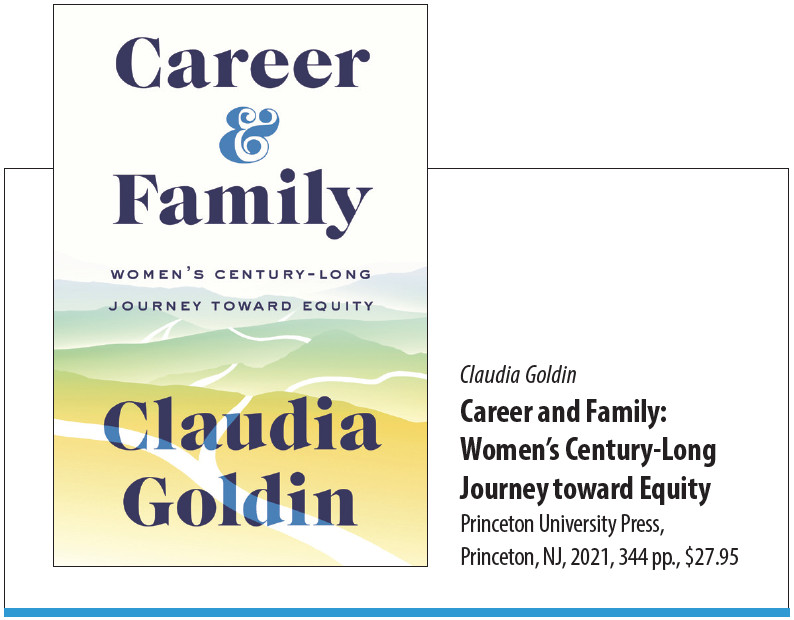Career and Family: Women’s Century-Long Journey toward Equity

Over the past century, women in the United States have made extraordinary gains in the world of work, argues Harvard economist Claudia Goldin in Career & Family. Most no longer need choose between having a child or a job. Women’s college enrollment and graduation rates outstrip men’s. And slowly but surely, opportunities have expanded enough to give many women the possibility of not just a job, but a career.
Goldin painstakingly maps female college graduates’ approach to work and family over the 20th century, given each decade’s constraints. A woman graduating in 1910 had to choose between a family and a career. In the 1920s and 1930s, by contrast, many women worked for pay before going on to have children. The trend flipped in the 1950s as the marriage age dropped and women began their families earlier, only to pick up a job—if they were able to—later on. The broad adoption of the birth control pill changed everything, so that by the 1970s, many women opted for a career first, sometimes at the expense of family. But by the 1980s and 1990s, women were pursuing career and family at the same time.
Don’t be fooled, though: the advancements don’t mean we’re anywhere close to economic parity or gender equality. Take the yawning gender pay gap—and I mean yawning in every sense of the word. Women’s earnings in the United States have been stuck somewhere between 77 cents and 82 cents for every dollar a man earns for 25 years. (And that figure masks how much worse it is for women of color.) To pin the pay gap just on gender bias or sexism or women’s apparently below-par negotiation skills—or their apparent predilection for lower-paying roles—misses the point entirely, suggests Goldin. That’s because it’s the very structure of work that’s at the heart of the problem.
Work, Goldin says, is greedy. It demands time from employees, and the more time they have to give, the more they will be rewarded. In a supply and demand world, companies pay more for staffers who are willing and able to put in endless hours and who will drop everything for a deadline. But time, as we know, is finite. And nothing illustrates that quite as powerfully as when a child enters the picture. Suddenly there’s another pull on an employee’s time that cannot be ignored. (You try ignoring a call from the school nurse and see where that gets you.)
So, what is to be done? One solution is to look at industries in which professionals can easily sub for one another. Here, Goldin points to pharmacists, who have figured out that consumers don’t need their prescriptions filled by the same person each month. But pharmacists are an exception; other white-collar professions like law or banking are not there yet. Clients still expect to have “their guy” pick up the phone when they call.
The progress we have made is being stymied by greed, argues Goldin. Too bad the thing we’re most greedy for is the one thing we can’t make more of: time.
Opinions expressed in articles and other materials are those of the authors; they do not necessarily reflect IMF policy.








